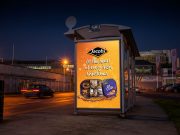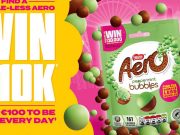 Aaron Poole, marketing executive, PML Group with this week’s Out \ Look on Out of Home
Aaron Poole, marketing executive, PML Group with this week’s Out \ Look on Out of Home
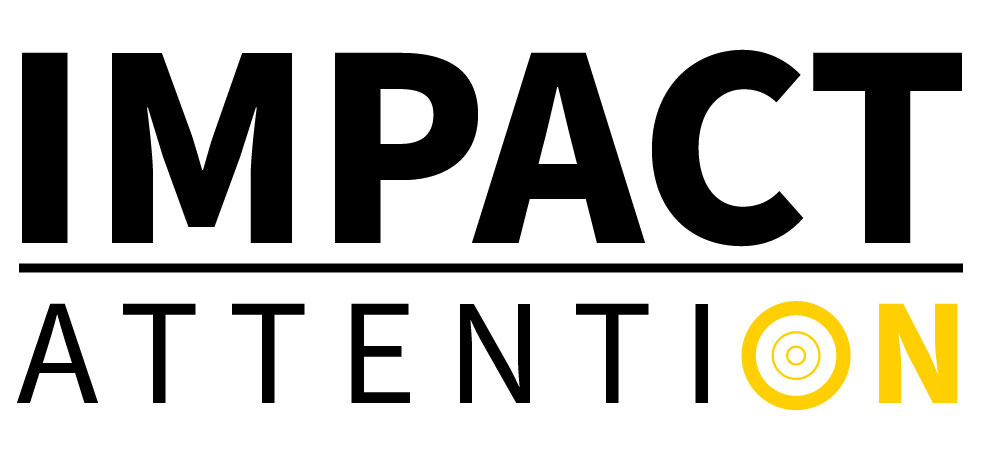
PML Group recently published the headline findings of IMPACT Attention, an Irish-first study delving into the unique position of OOH as a leader in the attention economy. This week, we take a deeper look at the first 4 of 8 pillars surfaced relative to OOH attention.
The research involved a quantitative study conducted by Ipsos B&A, comprising eight waves of 300 respondents across Dublin, aged 16 to 54 years.
- The OOH Attention Advantage
Given the weight of choice across digital, audio, and visual platforms, capturing an attentive audience in one place is no mean feat. For brands on OOH, this audience has never been greater. Our population is the biggest in 150 years. Traffic, retail footfall and commuter journeys are eclipsing 2019 levels. High levels of urban mobility are now complemented by a suburban buzz as new lifestyle patterns and the behavioural change of recent years has settled. The audience is primed for attention.
Recent insights from Amplified Intelligence highlight the critical role of attention from both an Active (direct and conscious engagement) and Passive (capturing subconscious awareness) lens as a core means of driving business outcomes. OOH is primed to capture both via non-intrusive, classic OOH as well as prompting engagement via interactive elements such as QR codes, augmented reality and social integration via Liveposter.
To that end, our study revealed that OOH advertising including Billboards, Outdoor ads, posters, digital screens, and buses caught the attention of 83% of consumers.

The data shows that younger demographics exhibit the highest levels of attention, with 87% of respondents aged 16-24 and 86% of those aged 35-44 reporting that they notice OOH ads. This high engagement among younger audiences suggests that OOH advertising is not only relevant but also impactful for targeting digitally savvy consumers.
Implications:
The proof is in the pudding: OOH is the attention medium.
The strong attention metrics among highly desirable but elusive younger audience demographics highlight the potential for OOH advertising to cut through the noise of everyday life. This is further backed by recent research from Posterscope highlighting Gen Z’s advertising preferences and, in particular, how they engage with OOH advertising.
The high attention capture rates underscore the potential of OOH to engage consumers during their daily activities. Billboards and digital screens in high-traffic areas can serve as constant reminders of a brand, creating multiple touchpoints throughout the day. This consistent exposure helps in building brand recall and reinforcing brand messages. By designing campaigns that resonate with consumers, advertisers can enhance visibility and engagement, driving more meaningful interactions with their brands.
Comparative Noticeability
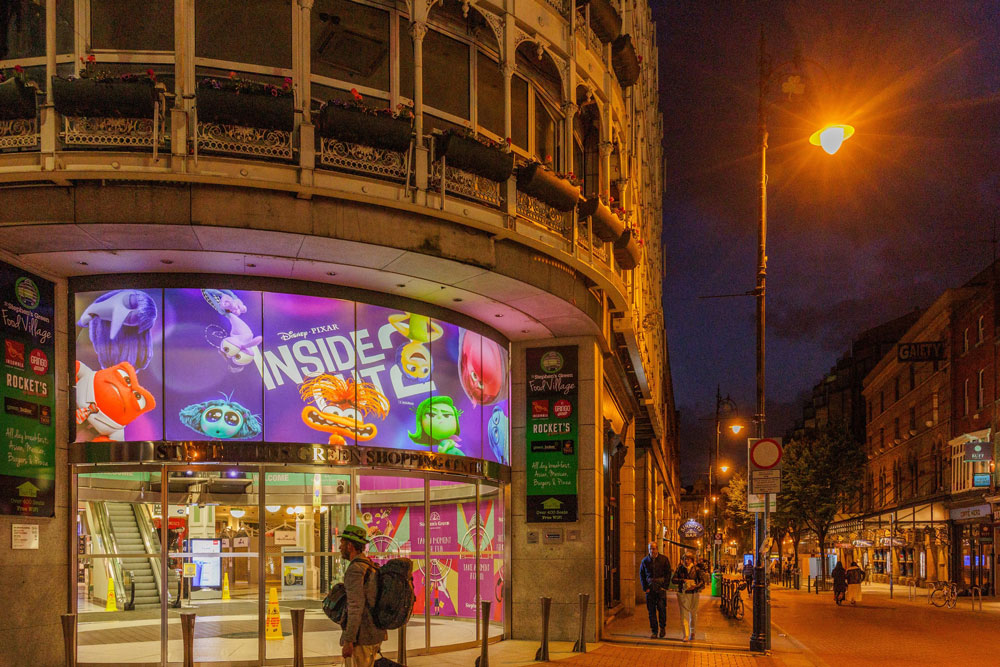
The latest Kantar TGI release revealed that more than 2.6 million Irish adults have noticed an outdoor ad in the past week. Our own study revealed that 93% of consumers ranked some for of Outdoor advertising in their top 5 media for noticeability. Out of Home advertising is a diverse and dynamic medium, encompassing various formats and environments. Billboards, posters, digital screens, transit ads, and more all differ in their capacity to capture audience attention and deliver advertising messages effectively.
Understanding these differences is crucial for optimising OOH campaigns to achieve maximum impact and engagement. The noticeability of different OOH formats can be attributed to several factors, including size, location, and context. Traditional formats such as billboards and posters offer broad visibility, while digital OOH formats like digital screens and dynamic displays can engage audiences on a deeper level.
Implications
The varying levels of noticeability among OOH formats highlight the need for a strategic approach to OOH buying. By leveraging the broad visibility of traditional formats and the high attention potential of DOOH screens via dynamic digital content, advertisers can create a comprehensive OOH strategy that maximises both reach and recall.
Traditional formats like billboards and posters should be utilised in high-traffic areas to ensure maximum visibility. These formats are particularly effective for brand awareness campaigns where the primary goal is to reach as many people as possible.
Digital screens and interactive displays offer opportunities for more engaging and dynamic content. Advertisers should capitalise on the ability of these formats to display video and interactive elements, which can capture and hold audience attention more effectively.
Incorporating unusual OOH formats into the advertising mix can enhance brand recall and perception. These formats can be used for special campaigns or product launches to create a memorable impact on the audience.
The placement of OOH advertisements is crucial. Locations with high dwell times, such as bus stops, transit hubs, and malls, should be prioritised for formats that benefit from prolonged exposure.
Combining traditional and digital OOH formats can create a synergistic effect, enhancing overall campaign effectiveness. For example, a billboard campaign can be complemented with digital screen ads in nearby areas, reinforcing the message across multiple touchpoints.
- Brand Discovery and Awareness
Outdoor advertising plays a crucial role in brand discovery by providing high visibility and wide reach. Previous research by the Outdoor Advertising Association of America (OAAA) indicated that OOH advertising can increase brand awareness by up to 300%, while our own iQ research has consistently shown Outdoor is a strong means of consumer brand discovery.
To that end, consumers have once again responded strongly to OOH facilitating brand discovery, with 67% of study respondents reporting that they have discovered new brands through the medium over the past year.

Brand discovery is particularly pronounced among respondents aged 16-24 and 45-54, with 75% and 73% respectively indicating that they have encountered new brands via OOH, speaking to the visibility and reach of the medium for generating brand awareness and perception.
Engagement During Activities
Kantar’s Media Reactions revealed consumers prefer channels that cause the least interruption to their lives. When it comes to advertising, consumers prefer in-person media channels like OOH, with the average person on the street preferring ‘sociable’ over social media.
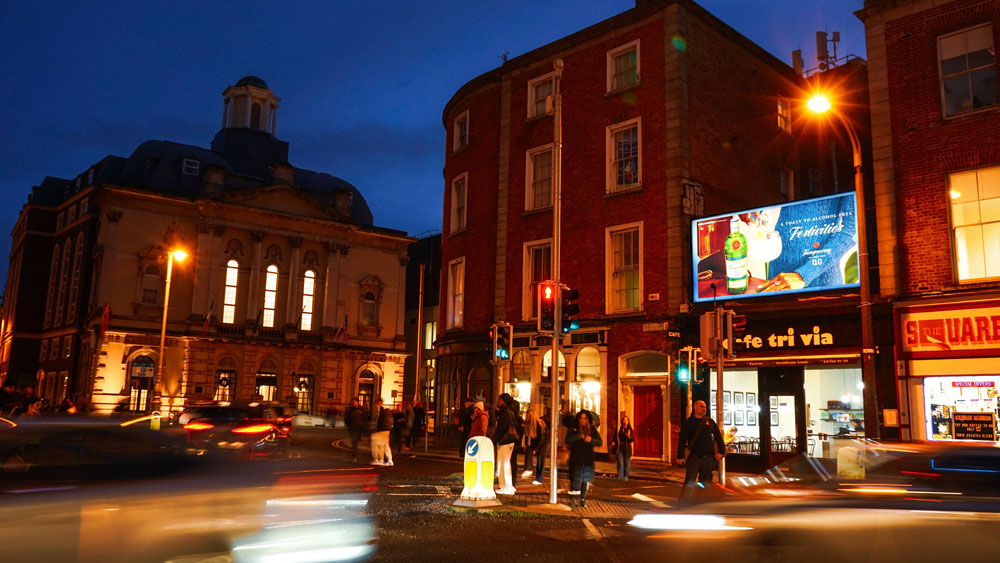
Speaking to this, our study also reveals that Outdoor advertising can effectively engage local exercisers by providing visual interest and motivational content along their routes. These ads offer a welcome distraction, enhance the visual appeal of the environment, and deliver relevant messages that resonate with health-conscious individuals. Regular exposure along familiar exercise paths reinforces brand recall, while interactive elements and mobile integration create memorable and engaging experiences. Strategically placed outdoor ads capture the attention of exercisers, making their routines more enjoyable and connecting them with the brand in meaningful ways.
62% of respondents noted as having engaged with OOH ads while participating in Outdoor activities and exercise. This engagement is particularly high among the 16-24 age group, with 71% reporting interaction with OOH ads during physical activities.
Implications:
The ability of OOH to drive brand discovery is crucial for new product launches and brand awareness campaigns. By strategically placing ads in locations frequented by the target demographic, brands can effectively introduce themselves to potential customers. This is particularly valuable for new and emerging brands looking to establish a market presence.
These findings also highlight the versatility of OOH advertising in capturing attention during various activities. Advertisers can strategically place ads in locations where people exercise or engage in recreational activities, such as parks, gyms, and recreational centres, to maximise engagement and brand introduction.
Strategically placed campaigns in high-footfall areas can target diverse audiences, ensuring continuous and impactful exposure. The visual appeal and innovative nature of Outdoor formats can capture attention and create memorable impressions. Complementing other media, they reinforce brand messages through repetition and offer a non-intrusive, cost-effective way to enhance brand credibility and community connection, ultimately driving consumer engagement and business growth.
- Cross-Media Reminder Effect
OOH & TV
73% OOH ads reminds me of ads I have seen on TV.
OOH & TV have long been considered complementary media. OOH adds incremental reach & frequency to a TV campaign, especially amongst hard to reach younger and more upmarket audiences. They are a complementary in terms of:
- Time of Day – roadside and commuter OOH is most effective during and in-between weekday rush hours while TV attracts prime time audiences in the evening.
- Geographies – OOH is particularly adept at reaching younger city audiences.
- Moods – At home we tend to be more relaxed and introspective while out of home we tend to be more active and reactive.
So, TV & OOH work together to drive:
- Advertising cut-through
- Brand awareness
- Brand equity & stature
- Message communications
- ROI & campaign longevity
Outdoor targets a younger demographic than other traditional media – radio, TV & press. Heavy OOH consumers earn more, and lighter TV viewers travel more. In effect Out of Home, in indexing high with young and upmarket cohorts, is a good ‘fit’ in terms audience with other media channels. It fills holes in demographics and builds frequency into broadcast campaigns.
OOH & Online

OOH complements online in a number of ways.
Reach
Reach is still the key ingredient for driving market share and building brands. OOH essentially provides a way for brands to build mass awareness with comparably low CPT’s. A powerful and trusted interaction, OOH nudges consumers into the buying funnel where digital plays an increasingly important role. Developments in technology and data have effectively digitised OOH’s reach. Mobile data reveals consumers’ movements and digital behaviours, providing a clear view of where, when, and how consumers interact with digital content when outside of their homes. Using data to plan OOH optimises reach. Brands can effectively target different audiences to influence new and changing patterns in consumer behaviour through location, frequency, and context. And the flexibility and agility of DOOH ultimately sharpens this focus to transform how brands drive saliency through contextual relevance…at scale.
IRL to URL: OOH drives consumers online
By bridging our public and private worlds, OOH advertising extends reach beyond the streets, driving consumers from In Real Life (IRL) experiences to online actions (URL).
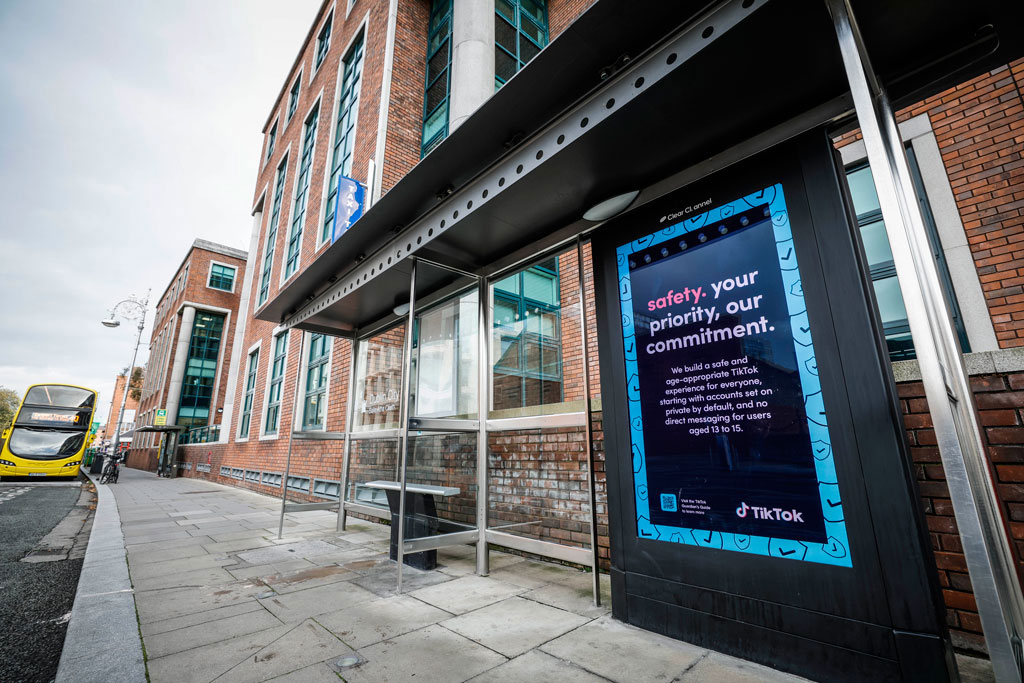
As brands and retailers invest to transform the shopper experience, and meet the demand for online buying, understanding how to reach and drive consumes to sites, apps and stores is fundamental for growth across categories.
The Point of Search research found that consumers more likely to search and purchase on mobile when out of home.
OOH is at the heart of mobility. There’s a natural synergy between the OOH and mobile experience, with both steeped in location. Unlike other media it can’t be skipped, scrolled past, or blocked. It’s hard to ignore. Which is why OOH can affect real behavioural change in ways that other, more passive media cannot.
Brands have consistently sought to leverage mobile as part of their OOH campaigns, to bridge their physical and digital efforts, connecting consumers using interactive QR codes, NFC capabilities and Augmented Reality.
Reinforcing TV and Online Ads

One of the standout findings from our study is the cross-media reminder effect of OOH advertising. A significant 73% of respondents reported that OOH ads reminded them of ads they had seen on TV, while 72% stated that OOH ads reminded them of online ads.
Implications:
These results emphasise the integrative power of OOH ads within a broader media strategy. By reinforcing messages seen on TV and online, OOH advertising can enhance brand recall and increase overall campaign effectiveness. Brands should adopt a multi-channel approach, using OOH ads to complement and reinforce their digital and TV campaigns, thereby creating a cohesive and impactful marketing strategy.
Integrating OOH with other media channels can significantly amplify a campaign’s reach and impact. When consumers encounter consistent messaging across multiple platforms, it enhances recall and reinforces the brand’s presence in their minds. This synergy is particularly effective in multi-channel marketing strategies.
- Path to Purchase
Impact on Purchase Decisions
When UK’s Out of Home representative body Outsmart published their ‘The Last Window of Influence’ study, it aligned with Byron Sharp’s ‘How Brands Grow’ by showing OOH the probability that a consumer will notice, recognise or think of a brand in a buying situation speaks to OOH’s key strengths: recency and relevance impacting on that consumer’s memory. The viability of Out of Home to build mental availability and bring about an action in consumers.
And it’s not just a question of advertising in the last window of influence. It’s about engaging classic roadside formats that consumers see as part of the fabric of their communities and that they notice more now in their communities than ever before. Digital signage also allows advertisers to vary the creative message to deliver an added layer of relevance and create added interest and action.
To that end, our study reveals that 61% of respondents indicated that OOH ads influenced their purchase decisions. This influence is particularly strong among younger demographics, with 79% of those aged 16-24 reporting that OOH ads impacted their purchasing behaviour. Gender differences are also notable, with 65% of males and 57% of females acknowledging the influence of OOH on their buying decisions.

Perception of Familiar Personalities in OOH Ads
For well-established brands, focusing on Passive Attention through high-quality content and strategic placements can reinforce brand equity. Our IMPACT awards showed familiar personalities in OOH ads generate high recall, implying they too draw attention through passive noticeability. Though elements of perceived trustworthiness towards local celebrities, influencers, or well-known figures have been noted to create stronger connections with their audience, fostering brand loyalty and recognition. This strategy is not only about capturing attention but also about making a lasting impression that drives consumer behaviour.

To that end our study found an impressive 79% of consumers reported that OOH ads featuring well-known figures grab their attention, with 61% of respondents indicating increased trust and recall towards them.
The attention-grabbing power of familiar faces is consistent across various demographics, but certain groups exhibit higher engagement levels. Among respondents aged 16-24, 81% noted that these ads caught their eye, while 80% of those aged 45-54 reported the same. The highest engagement was observed among males aged 45-54 (91%) and females aged 25-34 (83%). Trust levels are highest among males aged 25-34 (73%) and lowest among females aged 45-54 (56%).
The influence of well-known personalities extends beyond attention. A substantial 76% of consumers stated that they are more likely to remember a brand or message if it features a well-known personality. 68% of consumers also note as that seeing a familiar face in OOH ads makes the content feel more personal to them.
Implications:
The influence of OOH ads on purchase decisions demonstrates their direct impact on consumer behaviour. This reinforces the importance of strategic ad placement and creative content to drive purchasing decisions, especially among younger demographics.
The ability of OOH ads to influence purchase decisions underscores their direct impact on consumer behaviour. Brands should focus on crafting compelling and persuasive ad content that highlights unique selling points, promotions, and calls to action. Additionally, placing ads near retail locations can provide the final nudge needed for consumers to make a purchase, thereby driving sales and increasing ROI.
Additionally, ads featuring familiar personalities are not only more likely to be noticed but also more likely to be remembered. By featuring recognisable and relatable figures in their OOH ads, brands can enhance their advertising effectiveness. This approach can lead to higher brand recall, increased engagement, and ultimately, greater consumer trust and loyalty.
The high visibility and strategic placement of these ads ensure constant exposure to new brands and products. The engaging and visually appealing content captures consumer attention, making the ads memorable and impactful. Repeated exposure along familiar routes reinforces brand messages, while interactive elements and relevant promotions provide additional motivation to explore and purchase the advertised products or services. These factors collectively make outdoor advertising a powerful tool in shaping consumer behaviour and driving purchasing decisions.
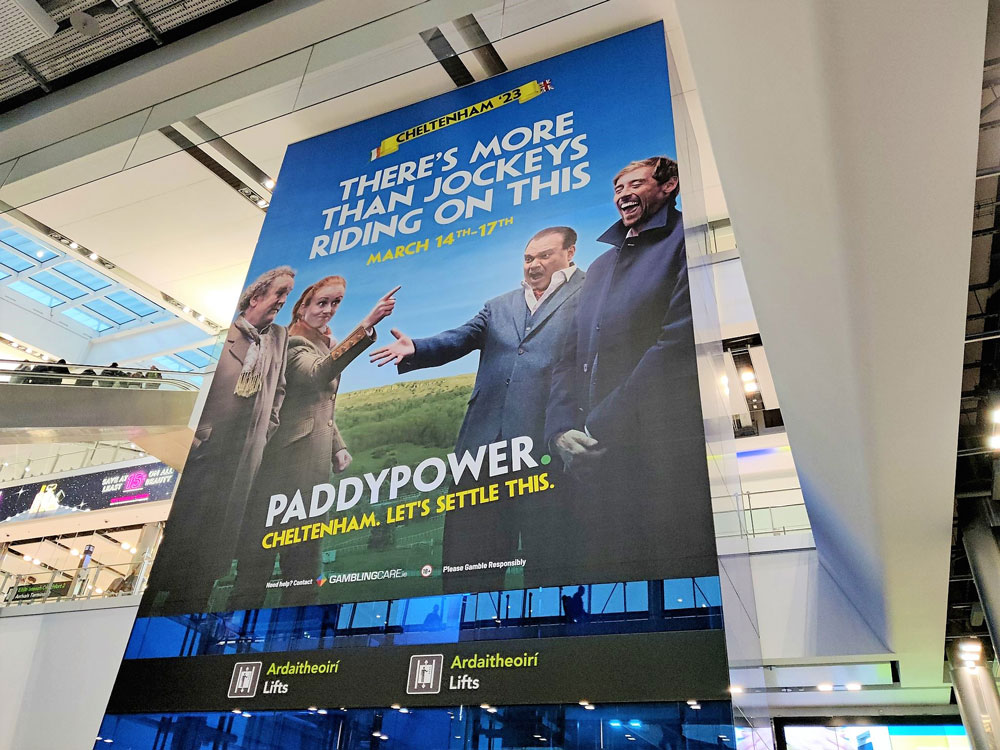
Join us next week’s Out \ Look when we will examine the remaining 4 pillars including the effectiveness of innovation, public information, sustainability, and local contextual OOH. For more information contact info@pmlgroup.ie.














